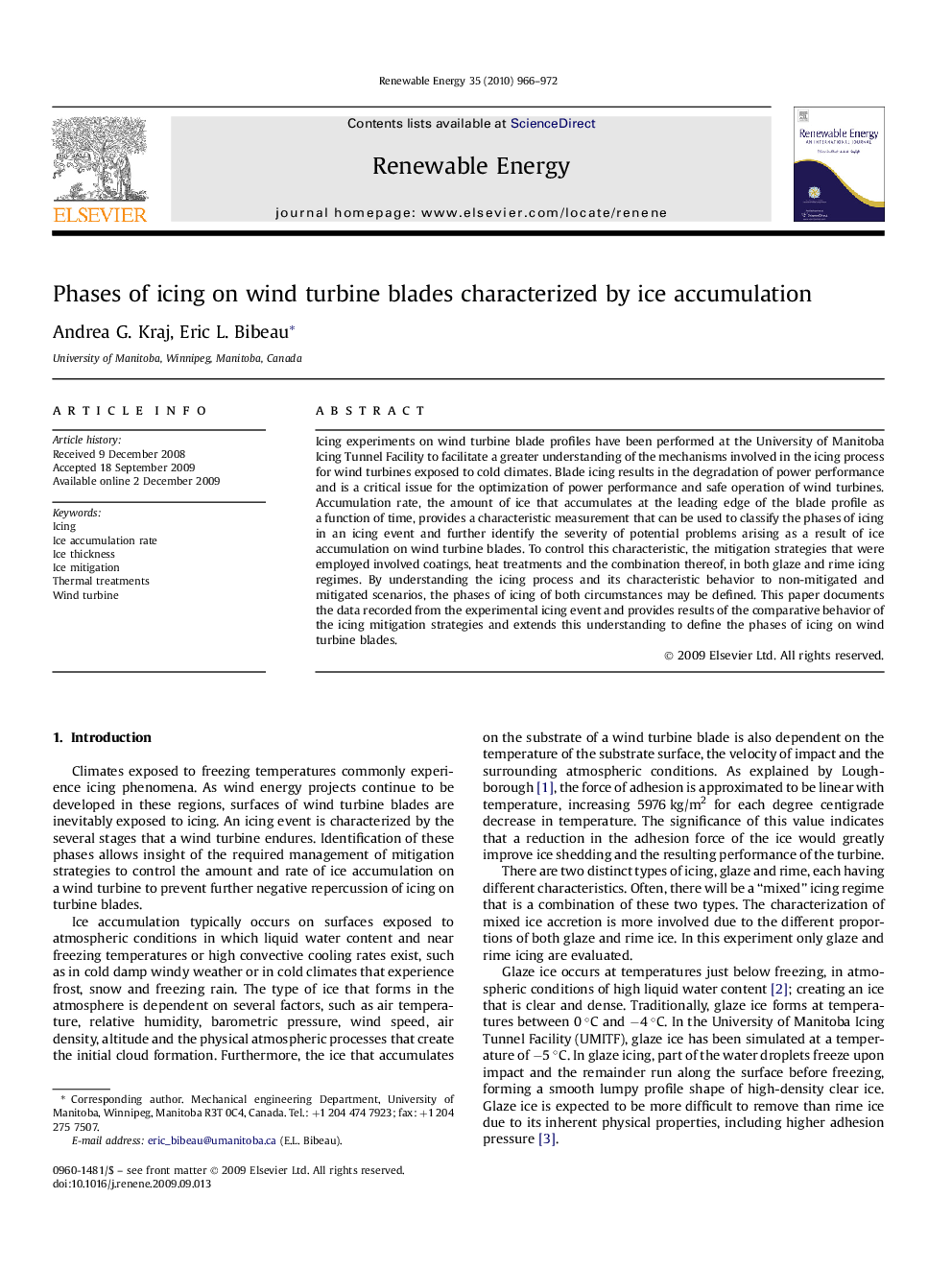| Article ID | Journal | Published Year | Pages | File Type |
|---|---|---|---|---|
| 301946 | Renewable Energy | 2010 | 7 Pages |
Icing experiments on wind turbine blade profiles have been performed at the University of Manitoba Icing Tunnel Facility to facilitate a greater understanding of the mechanisms involved in the icing process for wind turbines exposed to cold climates. Blade icing results in the degradation of power performance and is a critical issue for the optimization of power performance and safe operation of wind turbines. Accumulation rate, the amount of ice that accumulates at the leading edge of the blade profile as a function of time, provides a characteristic measurement that can be used to classify the phases of icing in an icing event and further identify the severity of potential problems arising as a result of ice accumulation on wind turbine blades. To control this characteristic, the mitigation strategies that were employed involved coatings, heat treatments and the combination thereof, in both glaze and rime icing regimes. By understanding the icing process and its characteristic behavior to non-mitigated and mitigated scenarios, the phases of icing of both circumstances may be defined. This paper documents the data recorded from the experimental icing event and provides results of the comparative behavior of the icing mitigation strategies and extends this understanding to define the phases of icing on wind turbine blades.
